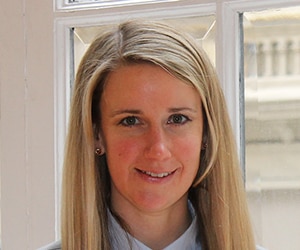Sarah I. Hody, an attorney in the Palo Alto office of law firm Perkins Coie, talks to Global Finance about fintech regulation and how the blockchain is impacting corporate interactions.

Global Finance: What trends have you seen in the regulation of digital assets over the past several years?
Sarah Hody: It is complicated; the relationship between banks and technology companies and regulators is evolving everywhere. In the US, there is tension between federal regulators and the states. Right now there is state-by-state regulation of digital assets, and turf battles between states. The Office of the Comptroller of the Currency supports a fintech banking charter, which would create a nationwide standard. Looking abroad, in China, for example, it is difficult to know the status of regulatory markets. China has been going back and forth between outright bans and making some uses of cryptocurrencies permissible. Right now it seems more in the banned phase.
GF: Why is digital asset regulation so tricky?
Hody: In part, it is the question of how to categorize them. Digital assets are generally split into three categories: currencies, predominantly used for payments; commodities, which can include tickets; and securities, such as many of the initial coin offerings. A digital asset often represents a hybrid of more than one category. A digital ticket can be a commodity, but if you sell it far in advance, in order to finance the event for which you sell the ticket, and you let people resell it in the meantime, it looks a lot like a security. How do you regulate it? Securities and commodities regulators are currently grappling with scenarios like this. Regulators concerned with money laundering especially focus on the on- and off-ramps: Where assets are coming from and where they are going?
GF: Why aren’t financial institutions building crypto platforms?
Hody: Banks have intricate compliance obligations, so the lift it would take a bank to develop an adequate compliance program, and liability if the bank failed to do so, are not worth it.
GF: What is holding up massive adoption of blockchain?
Hody: User experience, speed and regulation. Regulatory uncertainty makes it hard for banks and companies to know how a given project will be overseen. Network speed is also an issue. Payments are now handled extremely quickly by the payment processing companies such as Mastercard. Why would Mastercard switch over to blockchain if the result is slower payment processing? Consumers want digital services to work well. When blockchain is being used, the average consumer won’t even know. For mass adoption, more innovation needs to happen with the technology’s infrastructure and on the business-to-business side.
GF: What are some of the more promising uses for blockchain?
Hody: It is being used now by players in gold [mining] supply chains—miners, refiners, logistic suppliers, vaults. It’s being looked at for corporate accounting systems; a company could build in controls for financial audits that would make it difficult for an employee to be a bad actor. Governments are looking at blockchain for digital identity—passports and driver licenses. Eventually, a person’s age could be verified by a digital ledger that accesses information stored by the birth hospital—without revealing extra data, like an address, the way that showing a driver license does.
GF: What do you think of JP Morgan Chase’s new JPM Coin?
Hody: It’s a natural evolution. It is a good sign because the blockchain industry needs to grow up, and banking involvement is a step toward maturity. Even though CEO Jaime Dimon was critical of cryptocurrency, the bank had a blockchain research division. For customers, JPM Coins may not seem any different than any other dollar-denominated balance a customer already can hold with JP Morgan. The key benefit will be that it lets clients move large amounts of dollars within the network, at any hour.
GF: What about the environmental impact of blockchain?
Hody: It should become less of an issue for networks using proof-of-stake, rather than proof-of-work, models. Proof-of-stake models amount to something like cloud mining.



